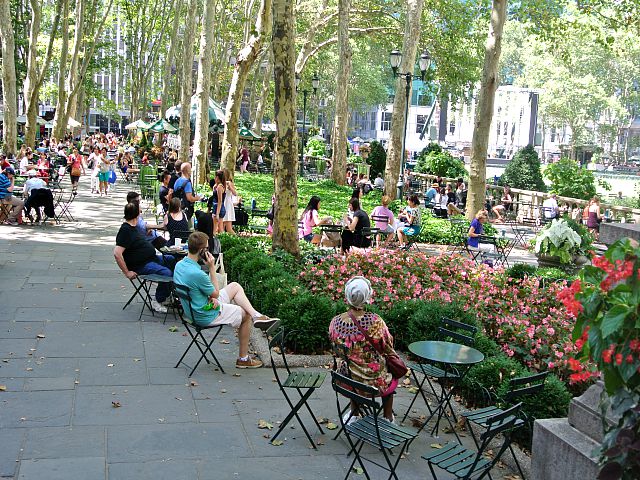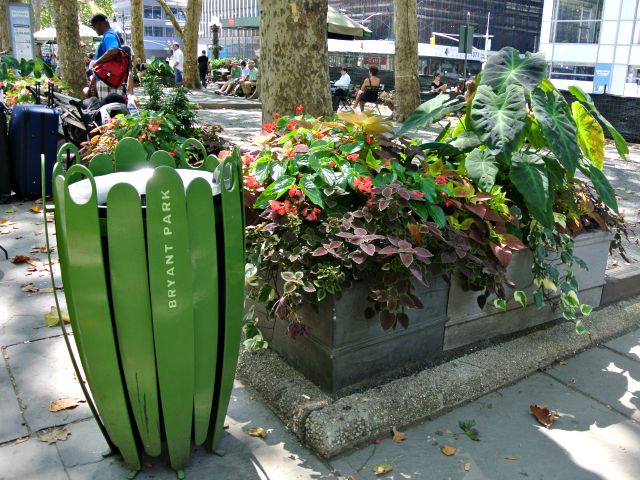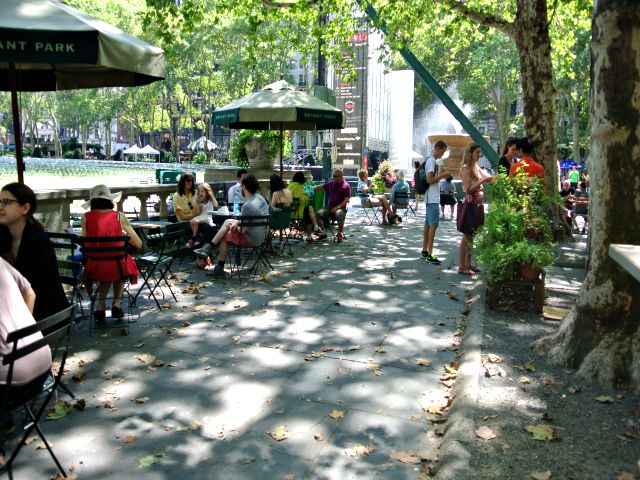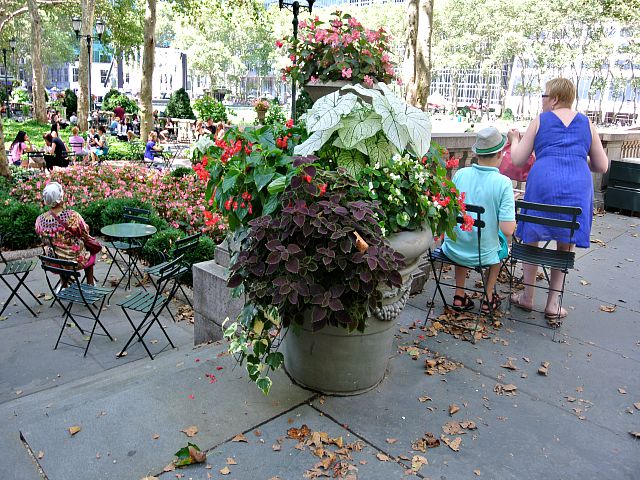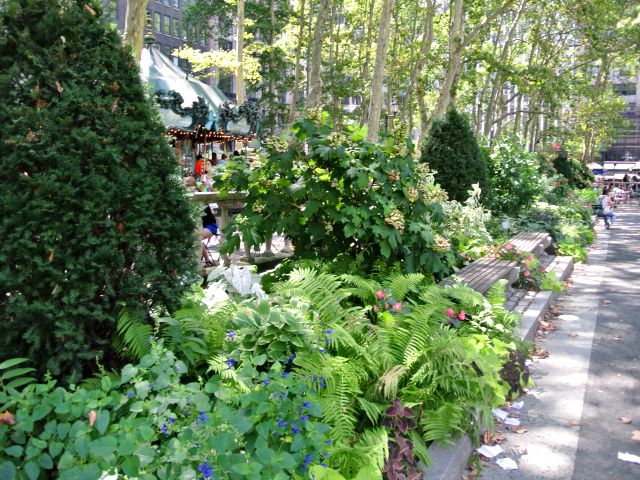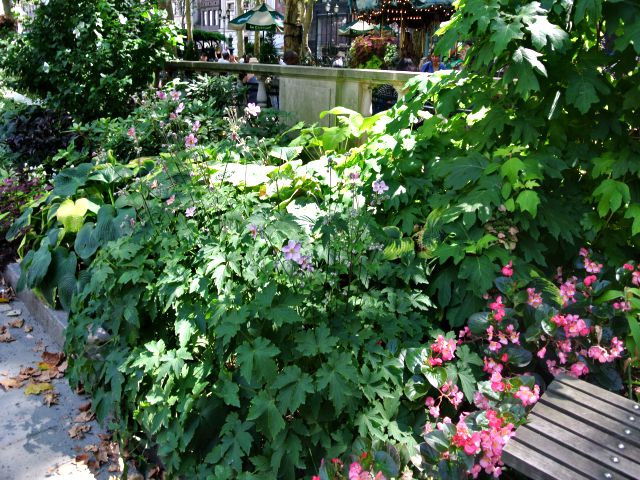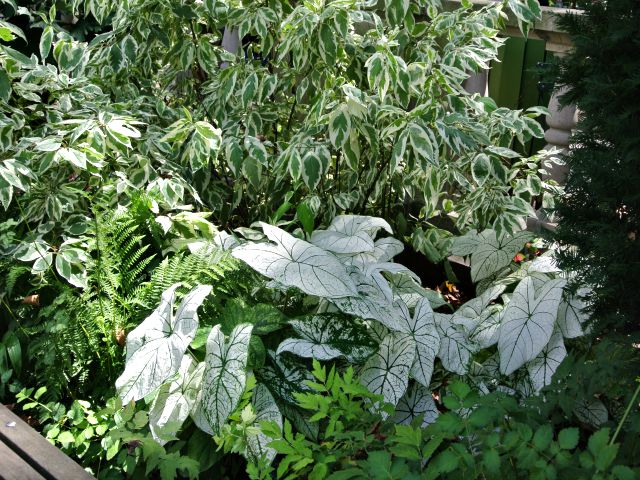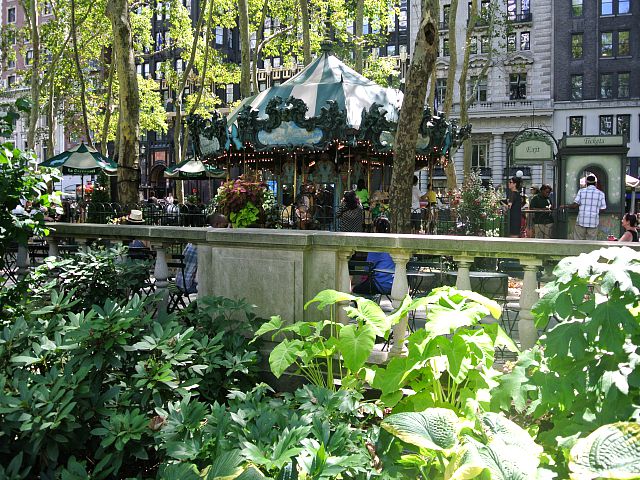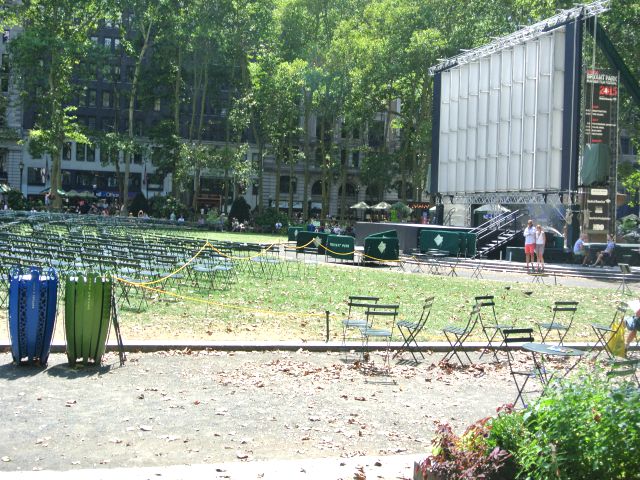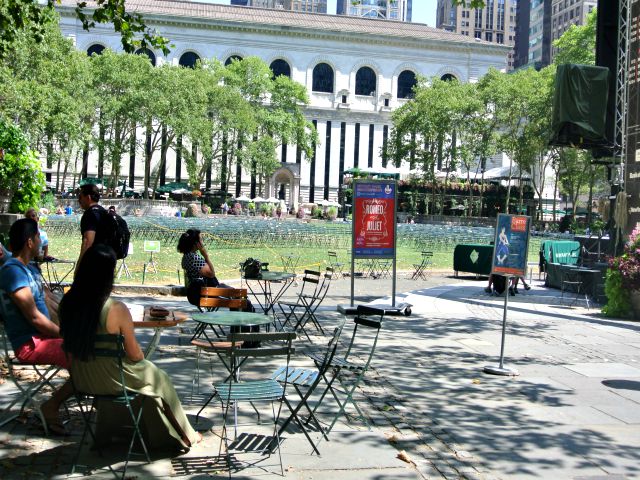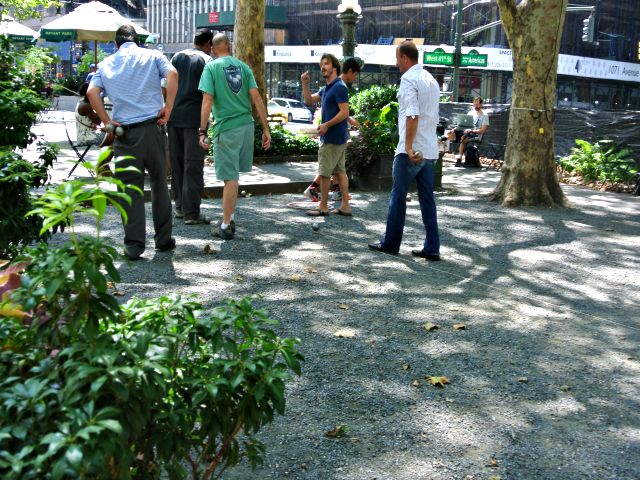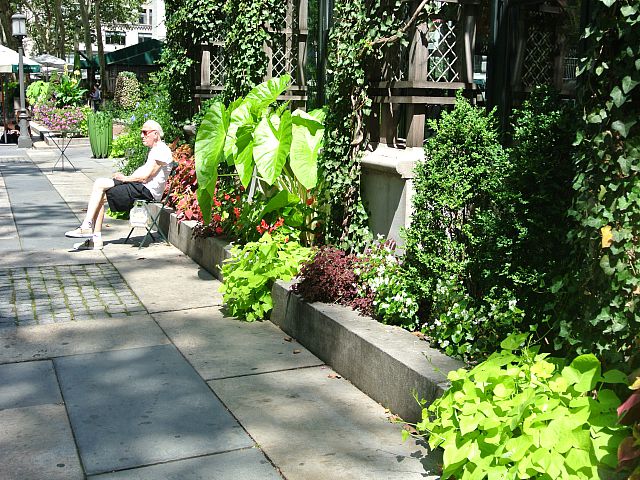I took an early train from Philly to Manhattan on Saturday to attend a dear friend’s family reunion that was taking place on a boat on the Hudson River. It was a thrill for me to see him with generations of his family that had traveled from throughout the U.S and beyond to get together for this every other year event. Although it was a blazing hot first day of August, after I got off the boat and said my good byes, my instincts told me to wander over to Bryant Park.
When I entered from the south side of 42nd Street, I stopped and took a deep breath to take in the sights, sounds, and smells. I knew I was in for a delicious treat. As I wrote in an article (almost 7 years ago) about Bryant Park, I’ve always felt that this parcel of land, with all of its bistro tables and benches where people could sit and chat, is reminiscent of some of my favorite parks in Paris. But this time around, I literally felt that I was in Paris.
As I started strolling through, I heard several people speaking French, along with a smattering of Italian, German, and some other languages that I couldn’t immediately identify. “Ah ha”, I thought to myself “these foreigners know where to come to experience urban beauty and relaxation.”
For those of you who aren’t familiar with the history of Bryant Park, here’s a quick snapshot.
It served as a battle ground during the Revolutionary War and then a burial site when Washington Square Park was overrun by victims of yellow fever. In 1884, Reservoir Square became Bryant Park, named after New York Evening Post editor William Cullen Bryant. There’s a statue of him at the park’s eastern end. In 1899, the Reservoir structure was removed and construction of the New York Public Library building began. In 1911, it became the home of the New York Public Library. In 1932, a replica of Federal Hall was built on the grounds to celebrate the Washington Bicentennial.
By the 1970s though, Bryant Park had become overrun with drug dealers, the homeless, and prostitutes. Thanks to the visionary Dan Biederman and Andrew Heiskell, the Bryant Park Restoration Company was founded in 1980. Its purpose was to renovate, finance, and operate Bryant Park in New York City. Its goal: to reclaim the park for the citizens of New York.
“Lavishly renovated in 1992 to complement the beautiful Beaux-Arts facade of the New York Public library, Bryant Park’s grounds include six flowerbeds planted with over 100 woody plants, herbaceous perennials, 20,000 bulbs, 200 planters, promenades lined with London Plane trees, three terraces, and midtown’s widest stretch of lawn.
Along the Northern and Southern sides of the park are twin promenades bordered by London plane trees (Platanus acerifolia). This is the same species found at the Jardin des Tuileries in Paris, and contributes a great deal to Bryant Park’s European feel. These trees can grow up to 120 feet in height.” *
I strongly advise anyone who is interested in plant material and garden making to stroll through the gardens and experience the work of the talented Lynden Miller who did an exquisite job designing them.
There are several elements of the park that make it so inviting. Le Carrousel (the carousel) is one of them: it’s open daily. I walked closed to this stunning structure and listened to the gleeful sounds of the children riding on it. Again, this brought back memories of the carousels that I had seen in Paris and that are strategically placed throughout the city.
Bryant Park has a Reading Room with shelves of books and magazines. It’s an open air spot, shaded by majestic London Plane trees, where you can sit and read quietly. But it’s also a place filled with reading, writing, and literary happenings.
Another extraordinary element of this park is how it has become a center of Arts and Culture. During the summer, every Monday night, the public is invited to bring a blanket, sit on the lawn and enjoy a classic film, sponsored by HBO. There’s also Bryant Park Shakespeare, Broadway in Bryant Park, Bryan Park Square Dance, Modern Dance, Piano in Bryant Park, and New Music in Bryant Park. All events are free.
And finally, I’d feel negligent if I didn’t mention that you can play Petanque at the park. When I first visited the South of France many years ago, I marveled as I watched the elderly men in the small villages spending hours playing this game. When I saw a group of guys of all ages playing it yesterday, I smiled and thought how the simple pleasures of life offer such joy and beauty.
Want to take some free classes? Here’s a smattering of what is offered at the park: juggling, fencing, language classes, fly fishing, knitting, birding tours. In the fitness realm, the following are taught: boot camp, barre class, tai chi, yoga, and meditation.
There are several more wonderful elements and activities that I haven’t touched on here. For more information about the park itself and all of the events offered, check out Bryant Park’s website.
I have purposely chosen to write about Bryant Park because I think it’s important for us gardeners to become advocates for not only more green space in our cities, but also for places of beauty where people can relax comfortably (with plenty of movable seating), engage in meaningful and fun activities, and be part of a community.
Although I am a huge fan of The High Line and Piet Oudolf, any city who creates a garden on unused railroad tracks (as Jerusalem did and Philadelphia is planning to do) is undertaking a mammoth project. What Bryant Park offers cities is the opportunity to envision what they might do with a certain parcel of land that is not being put to use efficiently.
The Bryant Park Corporation is funded by income from events, concessions, and corporate sponsors, as well as an assessment on neighboring properties. it DOES NOT accept government or philanthropic monies. It is visited by over 6 million people each year and is thought to be one of the busiest public spaces in the world. All it takes is imagination and persistence!
*Information taken from Bryant Park’ website and brochures.
NOW IT’S YOUR TURN. What is your favorite urban park?
If you’ve enjoyed this article, please share with others. It helps to get the word out AND it’s good karma. Thanks so much. With love, Fran

